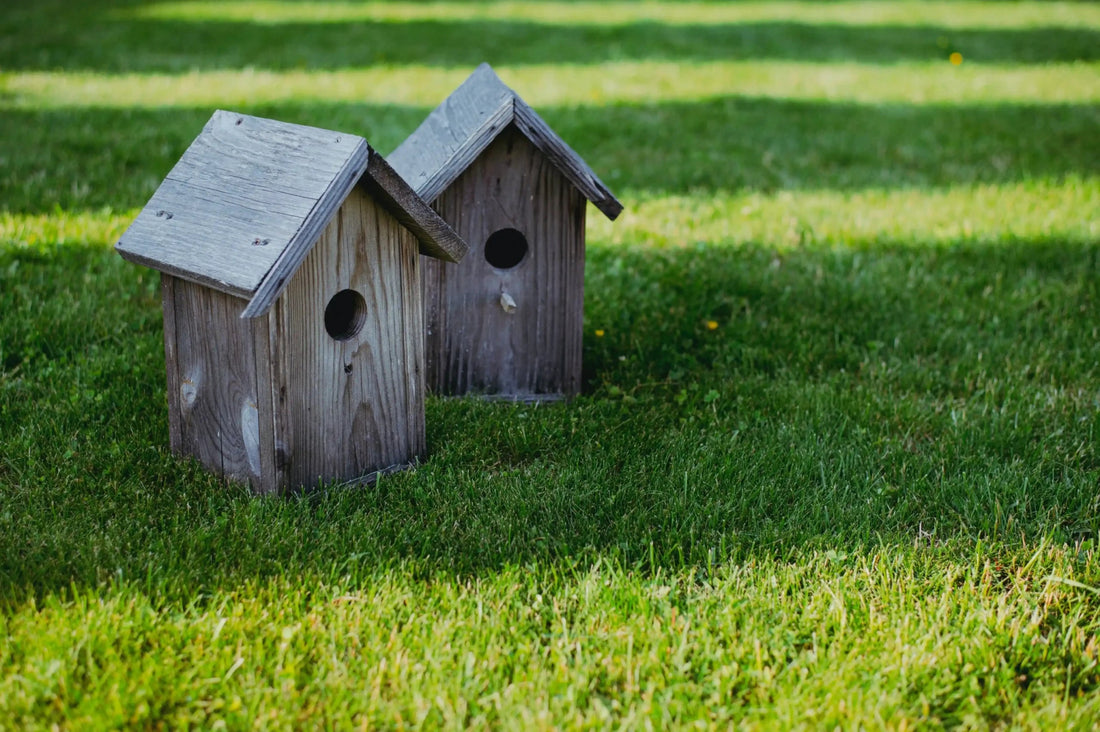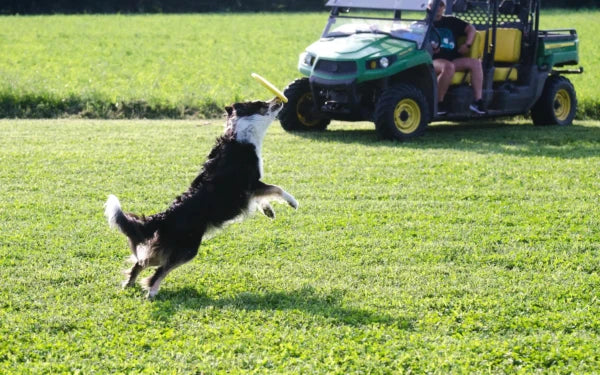
Grass Watering Made Easy: What is the Best Irrigation Method for Your Lawn?
Share
What is the Best Irrigation Method for Lawns?
Sprinkler irrigation stands out as the best method for watering your lawn. With its ability to provide consistent and even water distribution, along with the convenience of automated watering, sprinkler irrigation offers numerous benefits for maintaining a healthy and vibrant lawn.Save Time and Effort

With programmable timers and smart irrigation controllers, you can set specific schedules and durations for watering your lawn. This eliminates the need for manual watering, freeing up your time and energy for other important tasks. Whether you're away on vacation or simply busy with daily commitments, your sprinkler system ensures that your lawn receives the necessary hydration without any hassle.
Consistent Water Distribution
A key factor in maintaining a healthy lawn is providing consistent moisture to every corner of your yard. Sprinkler systems excel in this aspect by evenly distributing water across the entire area. The spray patterns and adjustable nozzles of sprinkler heads ensure that water is delivered uniformly, preventing overwatering in some areas and underwatering in others. This balanced water distribution promotes uniform growth and prevents unsightly dry patches or excessive runoff.Conserve Water and Reduce Water Bills
Advanced sprinkler systems come equipped with features such as rain sensors, soil moisture sensors, and weather-based controllers. These intelligent technologies adjust the watering schedule based on real-time weather conditions, preventing unnecessary watering during rainfall or when the soil is already adequately moist.Healthier Grass and Plant Growth
Sprinkler irrigation ensures that your grass and plants receive the necessary amount of water to thrive. Consistent watering helps root systems grow deep into the soil, enhancing their ability to access nutrients and withstand periods of drought.
Types of Sprinkler Systems
In-Ground Sprinkler System
These systems are installed beneath the ground, with sprinkler heads strategically positioned throughout the lawn. The benefits of in-ground sprinkler systems include:
Convenience and automation
Once installed, in-ground sprinklers operate on a programmed schedule, allowing for effortless watering without the need for manual adjustments.
Customizable zones
In-ground systems can be divided into separate zones, enabling targeted watering for different areas of your lawn with varying water requirements.
Reduced risk of damage
Since the sprinkler heads are concealed underground, they are less prone to damage from lawnmowers or accidental impacts.
Above-Ground Sprinkler System

Above-ground sprinkler systems offer a flexible and cost-effective option for lawn irrigation. These systems typically consist of movable sprinkler heads attached to hoses or risers, allowing you to easily adjust the watering pattern and coverage area.
Flexibility and versatility
Above-ground sprinklers allow you to water specific areas of your lawn or even target garden beds and other landscaping features.
Affordability and easy installation
Compared to in-ground systems, above-ground sprinklers are generally more budget-friendly and require minimal installation effort.
Adjustable settings
Many above-ground sprinklers offer adjustable spray patterns, allowing you to customize the water distribution to suit the shape and size of your lawn.
Smart Irrigation Controller
Are you looking to take your lawn irrigation system to the next level? Enter smart irrigation controllers, the game-changer in the world of lawn care. These controllers utilize weather data, measure soil moisture levels, and other smart features to optimize water usage.
Water conservation
Smart controllers adjust watering schedules based on real-time weather conditions, soil moisture levels, and evapotranspiration rates, preventing overwatering and conserving water resources.
Remote control and monitoring
Many smart controllers can be controlled and monitored remotely via smartphone apps, allowing you to make adjustments and track water usage even when you're away from home.
Watering customization
Smart controllers offer customizable settings, enabling you to set specific watering schedules for different zones and tailor irrigation to match the specific needs of your lawn.
Key Considerations Before Installing Irrigation System
Before diving into the installation of your irrigation system, there are several crucial factors to consider. Understanding these key aspects will help ensure that your system is tailored to your lawn's specific needs.
Soil Type

The soil type in your lawn plays a vital role in determining the irrigation requirements. Different soil types have varying water-holding capacities, affecting how well water is retained and absorbed by the roots.
Sandy Soil
Sandy soil has larger particles, allowing water to pass through quickly. As a result, it has a low water-holding capacity and may require more frequent watering.
Clay Soil
Clay soil has smaller particles, which means it retains water for longer periods. However, it can also become compacted, leading to drainage issues. Proper irrigation scheduling is crucial to prevent overwatering and waterlogged conditions.
Loam Soil
Loam soil is a balanced combination of sand, silt, and clay. It has excellent water-holding capacity and drainage characteristics, making it ideal for most lawns. However, proper monitoring and adjustment of watering practices are still necessary.
Lawn Size
The size of your lawn plays a significant role in determining the type and scale of your irrigation system. A larger lawn may require a more complex system with multiple zones and sprinkler heads to ensure uniform coverage. Conversely, a smaller lawn may be adequately served by a simpler, single-zone system. Consider the dimensions of your lawn when selecting an irrigation system to ensure efficient water distribution.
Lawn Shape
The shape of your lawn can also impact the design and coverage of your irrigation system. Irregularly shaped lawns may require careful planning to ensure that all areas receive sufficient water. Consider the layout of your lawn and identify any challenging areas, such as narrow strips or corners, that may require special attention. Adjusting the placement and type of sprinkler heads or utilizing additional watering techniques, like drip irrigation, can help accommodate the unique shape of your lawn.
Other Types of Irrigation Methods
Surface Irrigation
Surface irrigation involves the application of water directly onto the soil surface, allowing it to infiltrate and spread through gravity. This method offers simplicity and affordability, making it suitable for large areas. However, it also has limitations in terms of water distribution efficiency and the potential for runoff. Careful management and slope considerations are necessary to minimize these drawbacks.
Pros: Simplicity, low cost
Cons: Inefficient water distribution, runoff potential
Drip Irrigation
Drip irrigation is a method where water is delivered directly to the root zone of plants through a network of tubing and emitters. It ensures water is delivered directly to the plant's root zone, minimizing water wastage through evaporation or runoff.
Pros: Precise water application, water conservation
Cons: Higher initial cost, potential clogging, maintenance of emitters
Sub Irrigation
Sub-irrigation, also known as seepage or subsurface irrigation, involves delivering water below the soil surface to provide a constant moisture supply to plant roots. It ensures uniform soil moisture, facilitating balanced growth.
Pros: Reduced water evaporation, uniform soil moisture
Cons: Limited applicability, potential for waterlogging
Best Practices for Lawn Irrigation

Water When the Grass Needs It
Watering your lawn based on the specific needs of the grass is crucial for its well-being. Overwatering can lead to shallow root growth and increased susceptibility to diseases, while underwatering can result in stress and browning of the grass. It's important to monitor signs of water stress such as wilting or a bluish-gray appearance, and adjust your irrigation accordingly.
Water In The Early Morning
The best time to water your lawn is in the early morning hours, typically between 4 am and 9 am. There are several advantages to this timing. Firstly, the temperature is cooler, which reduces water loss due to evaporation. Secondly, there is usually less wind, allowing for more precise water distribution. Lastly, watering in the early morning gives your lawn ample time to dry before evening, reducing the risk of disease caused by extended periods of moisture.
Water Deeply and Infrequently
Instead of frequent shallow watering, aim to water your lawn deeply, allowing the water to penetrate the root zone. This encourages deep-root growth and helps the grass become more resilient to drought conditions.
Lawn Irrigation FAQs

Q: Are lawn irrigation systems worth the money?
Yes, lawn irrigation systems are worth it. While there is an initial cost involved, the long-term savings in water bills and the improved health and appearance of your lawn make lawn irrigation systems a worthwhile investment.
Q: How can I ensure even water distribution with my sprinkler system?
To achieve even water distribution, consider the following tips:
- Adjust your sprinkler heads to avoid overspray onto non-landscaped areas or hardscapes.
- Ensure proper spacing between sprinkler heads to cover the entire lawn area.
- Regularly inspect and clean the sprinkler heads to prevent clogging and ensure consistent water flow.
Q: What is the lifespan of a typical sprinkler system?
On average, a well-maintained sprinkler system can last anywhere from 10 to 20 years. Regular inspections, repairs, and upgrades as needed can help extend the lifespan of your system.
Q: Can I retrofit my existing sprinkler system with water-saving features?
Yes, it is often possible to retrofit existing sprinkler systems with water-saving features. Examples include installing pressure-regulating devices, upgrading to more efficient sprinkler heads or nozzles, and incorporating moisture sensors or smart irrigation controllers.
Q: Can I install a sprinkler system in a small yard?
Yes, sprinkler systems can be installed in small yards. The key is to design the system to match the size and layout of your yard. Consider using compact sprinkler heads, drip irrigation, or micro-sprinklers to effectively water smaller areas.